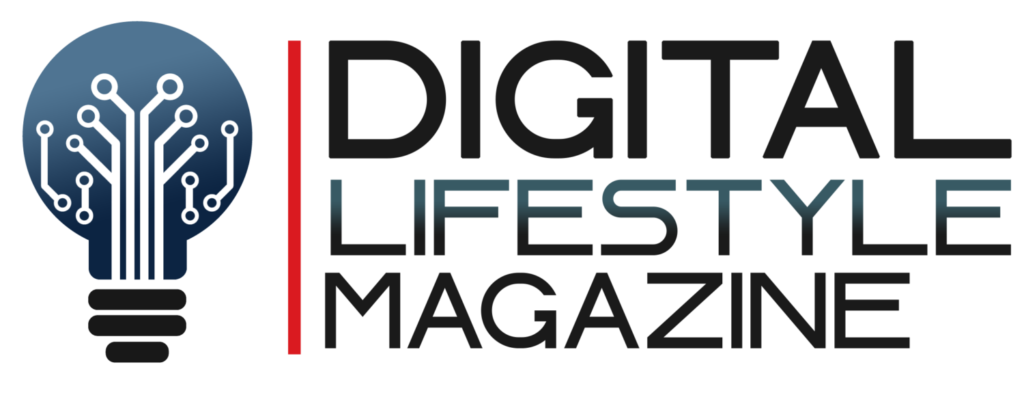Wow Essays review shows how digitalization has come to the world of education and moved the information base to the Internet. Digital technology has expanded the possibilities for creating and processing static and moving images and sound. Their emergence has raised many questions about the authenticity of a work of art without a material original, the power of “digital” over human perception, and the artist’s fate in an era of developing artificial intelligence.
Table of Contents
When did the process of “digitizing” reality begin?
“Digital art” is now referred to as artistic practices using digital technology. Since the 1960s, in addition to analog materials such as pencils and paints, metal and clay, and magnetic tape for sound and video recording, artists have been equipped with new tools, intermediary devices, whose function is to calculate electronically and present data in code. For half a century, digital art has been referred to as computer art, multimedia art, or cyber art. These definitions have now been superseded by the widespread terms “media art” or “new media art.
But how new is the idea of digitizing information itself? Media theorist Willem Flusser is certain: we owe the idea of the ubiquitous penetration of numbers into our lives to the New Age, when natural scientists declared that the book of nature was written in the language of mathematics. From that moment on, the transformation of nature into a mathematical model with which scientific and technical operations can be performed.
Media theorists see the history of communication as a reflection of how ways of thinking have changed: from sensory knowledge of a four-dimensional world to create a digital model of reality and the man himself existing in it.
How have the new media influenced ideas about the human being and the body?
Before the twentieth century, philosophers, when discussing the mind and the intellect, most often viewed the body only as an intermediary for executing thought processes, devoid of its significance. In the last century, philosophy finally turned to the body and analyzed embodied experience. Media theory picked up this trend and brought its ideas to the study of the body. Eugene Tucker, for example, draws on biomedical research on the body and genetic and biotechnological developments to show that the body, which seems to us to be the undeniable original given of our existence, is always hypertrophied by the knowledge we have of it. In the 1950s, a new model for describing both the human body and thinking was established: the machine. And this model proved to work: modern biomedical technologies such as bionics, prosthetics, 3D printing of artificial organs, transplantation, and xenotransplantation justify interpreting the body as a modular system made of replaceable parts.
Media theorist Mark Hansen noted that members of the phenomenological tradition resorted to technical metaphors when talking about human consciousness in the twentieth century. In phenomenology, time is the basic structure through which the body exists in the world. In describing this structure, philosophers analyzed the unfolding of sound in time through the technical innovation of sound recording. It turned out that the boundary between the technological and the biological is somewhat contingent, and this fact poses a severe challenge to both philosophy and media studies.
The notion of the human being as a system with more or less predictable behavior that can be modeled has been applied to algorithms of social networks and marketplaces. They track a person’s behavior and their search query history and, on that basis, make predictions that turn out to be surprisingly accurate. The possibility of such a technical miracle lies in the fact that man himself is perceived as a kind of computing machine which can be guided by another device, already man-made.
Despite the effectiveness of the mechanical human model, artificial intelligence has not yet shown itself to predict human activities beyond everyday automatism (scrolling through social media feeds and shopping), namely creative activities.
Today it is no longer possible to think of the human being as an abstract system. This metaphor has been replaced by the image of a scattered network consisting of very different elements and processes. And this is an absolute nightmare for philosophy. We are gradually losing the outlines of the humanoid subject. For media studies, it is relevant to talk about the post-human or non-human, that is, some new forms of existence that do not fit into the generally accepted criteria of humanity. And we are not talking about science-fiction scenarios but about phenomena that are already being observed. For example, in biomedicine, the human being is seen as a system where organs are replaceable parts that can be taken from donors or printed on 3D printers. The view of the human being as a specific genetic apparatus that can be edited and manipulated in various ways or the idea of achieving digital immortality by copying the brain onto a synthetic silicon carrier has already become a significant part of our cultural reality.
The new possibilities of implantation and “prolongation” of the body also intrigued artists, who used them in a very non-trivial way. An Australian of Cypriot origin, Stelarc has been experimenting with his own body since the mid-1990s:
- Allowing viewers to remotely stimulate his muscles with electric shocks.
- Building a spider-like exoskeleton powered by a hand gesture.
- Broadcasting video from his stomach.
- Implanting implants under his skin.
His dream is the third ear on his forearm that would “hear” the same thing as the artist through a microphone and signal to the World Wide Web.
How has digitalization affected art?
The cultural theorist Walter Benjamin expressed the challenges and problems facing art in the context of digital technology as early as 1936 in his essay “The Work of Art in the Age of its Technical Reproducibility. At that time, talk of the death of art was also associated with scientific and technological advances – the emergence of photography, which many suggested could supplant the visual arts. But this did not happen: photography did not become a competitor to painting but formed its ecological niche.
Christian Pohl, the author of Digital Art, draws an essential distinction between art that uses digital technology as a tool to produce more or less traditional works and what is commonly referred to as media art proper, “digital computer art that is created stored and distributed using digital technology and uses it exclusively as an expressive medium.
Another way of dealing with digital technologies is to think about the impact of “digital” on society, politics, culture, and economics. Artists can translate both optimistic scenarios and rather pessimistic ones in their works, emphasizing the social and political divisions to which digital technology can lead.
In recent years, a vital subject for art is surveillance technology and how artificial intelligence and automation exacerbate social differences and lead to even more significant inequalities between people in a global digital panopticon where everyone becomes an observable object.
Are programmers the new curators?
The first-ever digital image is believed to have been captured in the late 1950s on the SAGE interceptor guidance system computer screen. It was a vector silhouette of a pinup beauty created with 97 punch cards. It is interesting that, just as at the dawn of the computer age, in the 2010s, the tastes and preferences of not artists or influential figures in the art world – curators, gallerists, art critics, and dealers – but programmers have become particularly important in the field of digital art. It is primarily a question of NFT technologies and teaching artificial intelligence to create digital works.
NFT-technology is much more interesting than aesthetics due to redefining the role and function of a work of art in the commercial system. Theorists of replicable, clonable art such as Walter Benjamin and Jean Baudrillard would have loved the idea of a digital right to own an original work of art that does not need an original. One could say that the emergence of such technology illustrates the process of total abstraction and the rejection of materiality. But in doing so, bearing returns in a new form: for example, when, as a performative gesture, the physical origin of a work of art is destroyed in a shredder.
NFT technology was the first thing that attracted the attention of the commercial sector of the art community – auction houses. Museums see this technology primarily to draw attention to their permanent collections and as an additional source of income on the wave of excitement surrounding the record sales of NFT works. As for the representation of NFT in classical art institutions, complex issues of ownership of digital objects still impose legal restrictions on their display, for example, if it is a work with thousands of owners.
Will artificial intelligence replace artists?
In recent years, generative-adversarial neural networks and machine learning have led to algorithms that, after analyzing an array of “fed” samples, can generate their images. Three years ago, the Portrait of Edmond Bellamy, drawn by a neural network, went under the hammer for a lot of money at Christie’s. The sale caused a scandal: while techno-optimists rejoiced over the release of artificial intelligence and the taking of the last frontier held by humans – the ability to create, many felt that “machine” art devalued the efforts of human artists.
These fears are exaggerated. Neural networks themselves do not think: learning from known images, they do not create a new one but model an idea based on statistical coincidences. In their drawings, neural networks do not so much produce thinking as they reflect features of human perception, namely human visual patterns. The problem with machine learning is that the result produced by the machine depends on humans put into it their ideas about the classification of specific structures and phenomena, which themselves are neither ethically nor aesthetically, much less politically neutral. Artificial intelligence today depends too much on humans for us to call it a full-fledged creative subject.
We should not forget that digitalization is not only a process accompanied by the development of artificial intelligence but also a history of how people with different medical conditions have found their place in the technical and scientific developments that have become part of our everyday reality. The graphical user interface we work with was based on models that were developed by developmental psychologists, dermatologists, and other specialists who worked with children and adults with various perceptual, cognitive, and neurological disabilities. Their contributions have proven invaluable yet invisible.
So it’s essential to look at digital culture as an environment that can give voice to very different people. While net-art artists criticize the stable hierarchies of the art world, which is still far from being fully inclusive and open, contemporary video artists using VR technologies offer viewers a view of reality from the perspective of a neural-typical person. And while digital technology seems to be developing for its own sake, humanity – not as an average statistic but understood as a variety of experiences of equal but very different individuals – is becoming one of the most exciting themes in art.


